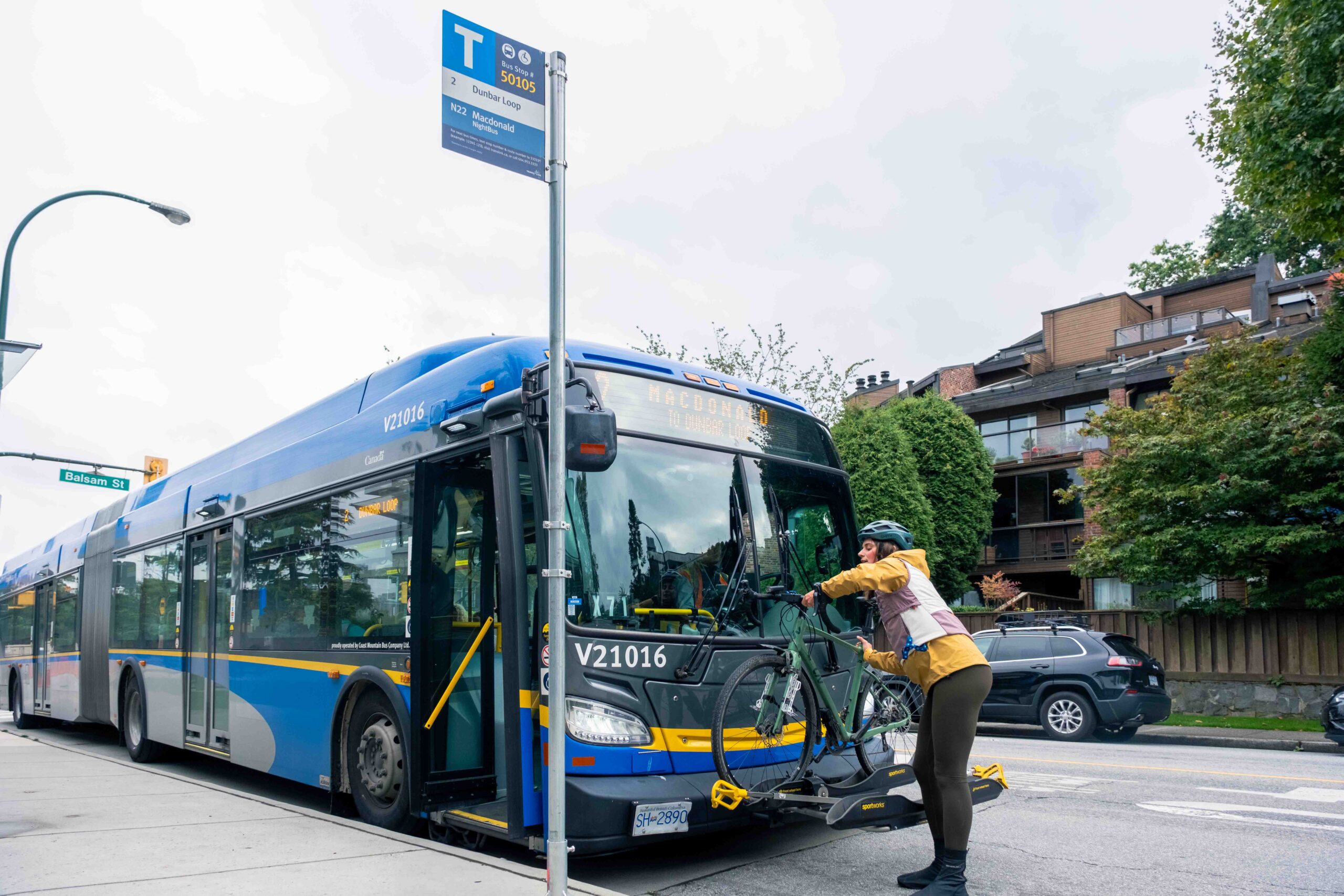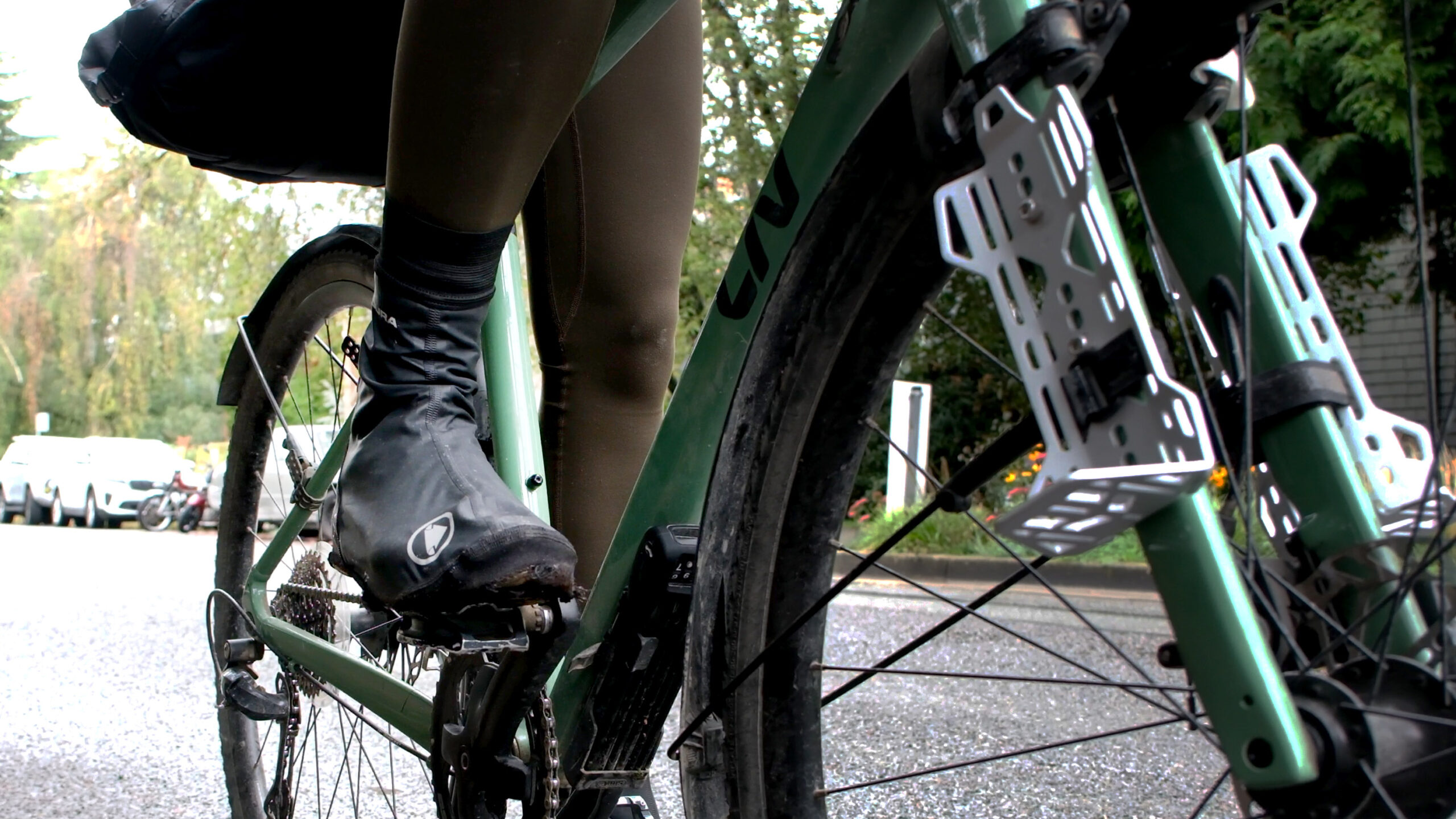11 tips for cycling in the rain
11 tips for cycling in the rain

I’m Molly and I’m an all-weather cyclist with a general love for moving!
I started biking as my main way of getting around in 2018 and fell in love with the joy and connection it brought to the daily “in-betweens.” I have bike toured around Vancouver Island, and from Washington to California.
Cycling doesn’t have to be a seasonal activity. It can be part of your lifestyle and done all year-around.
Like in the summer, cycling during the rainy seasons can still be the quickest and easiest way to get around, especially for shorter trips. Plus, you benefit from a “secret exercise” built into your day.
But because there are added hazards like rain, fog, darkness, and cold temperatures, it’s best to take extra care. Wear extra layers and install proper gear on your bike.
Cycling in the colder months is all about being prepared and planning ahead. Especially in Metro Vancouver, where weather conditions change quickly and the sun sets earlier each day.
Here are some tips for cycling in the rain.
1 | Check your ABCs (air, brakes, and chain)
It’s always good to do a regular check-up of the ABCs: air, brakes, chain!
Air – make sure your tires are full of air – and if you don’t have a pump on hand, no worries. Did you know that every bike shop has a bike pump available for free?
Brakes – check your brakes before you ride! Make sure they feel good and stop the bike from moving when you apply pressure. If things feel funky, it may have something to do with the brake pads, cable tension, or alignment. Bring it in to the bike shop and get it checked out.
Chain – is your chain clean and oiled? If you can’t remember the last time you oiled your chain, best to pop into a bike shop. They’ll usually share oil, free of charge!
2 | Wear waterproof shoes or shoe covers

Keeping your feet dry is crucial when you’re biking in wet weather. Even if it isn’t raining, groundwater or puddles can splash up and surprise you. Your feet are the closest part of you to the ground, after all!
Waterproof shoe covers keep any pair of shoes dry no matter the weather, and often have reflective features. A pair of waterproof shoes will also do the trick and are an easy choice for casual trips or light rain.
3 | Glasses on, rain out
Just like a windshield on a bus, keep your vision clear from the elements while biking! Wear clear glasses to shield your eyes from the rain, wind, and cold. Clear glasses are better than tinted glasses in dark and cold weather, as they’ll help you maintain full visibility while sheltering your eyes and face from the elements.
4 | Always have bike lights
Lights are not only helpful for safely navigating on your bike in the dark, but they’re also required! Front and back lights will ensure that you can see where you’re going in the rain, and that people using the street can see you.
This is important during the day and night, especially if visibility is low in rainy or foggy weather. Use a front bike light that is bright (200+ lumens lights will do the trick!) and a back light that is at least 50 lumens.
You can even buy coloured lights that snap onto the spokes on your wheels for an extra pop.
5 | Wear a waterproof jacket and pants
A waterproof jacket is a core part of the rainy-gear repertoire, and rain pants complete the outfit. Especially in heavier rain, rain pants will ensure that the water on your rain jacket isn’t slicking off rain right onto your dry pants!
Jacket pockets are a great place to stash your phone or keys so they are easy to access and dry. Even if it’s not raining, bring a rain jacket in case the weather turns. It’s better to be safe than soaked!
6 | Wear bright and high-visibility clothing
Just like lights, bright and high-visibility clothing will keep you seen on the road. There are plenty of ways to sneak bright features into your gear: vests, hi-vis shoelaces, reflective tape or stickers for your bike or helmet, reflective jackets and shoe covers, and even key chains for your backpack.
An orange safety vest is always a great choice, but don’t discount how many simple ways you can roll out bright and bold with the gear you already have.
7 | Bring a pair of gloves (or two pairs)
Your hands are the first body part to cool down since they are actively breaking the wind on your handlebars and get less blood circulation.
Keep a pair of gloves to keep your hands warm. Bonus tip is to bring two pairs if it’s raining — one for the way there, and one for the way home. Wet gloves can still make your hands feel cold.
8 | Install all-weather cycling fenders
Fenders are very popular amongst the rainy season cyclists, and for good reason! These sleek covers over your front and back wheels will keep grime and water from hitting you and your bike. This means less laundry and fewer visits to the bike shop.
When your drivetrain, the part of your bike that transforms your pedal power into movement, is kept clean, your bike will shift more easily and be less expensive to maintain. Your local bike shop will be happy to install these simple and cost-effective components.
9 | When it gets too rainy, take transit the rest of the way
Transit is there for you if it’s pouring rain and you don’t feel safe or comfortable finishing your ride. Bikes are welcome on the buses, SkyTrain (with some restrictions), SeaBus, and West Coast Express. Transit gives you the flexibility to bike one way, or part of the way, giving you the confidence to roll in the rain.
10 | Map out your route before you leave
In wet or cold weather, it may be difficult to pull out your phone. Map out your route in advance or pop your device in your pocket with audible directional prompts if you need extra guidance.
11 | Take it slow and ride with caution
Concrete can be slippery when it’s wet, especially if it has painted street markings (like the green “conflict paint” paint you might see in a bike lane). You may also need extra time and slower speeds to safely stop. Expect other people on bikes, walking, driving, or rolling to need extra space, as well.
Molly Barkowsky





